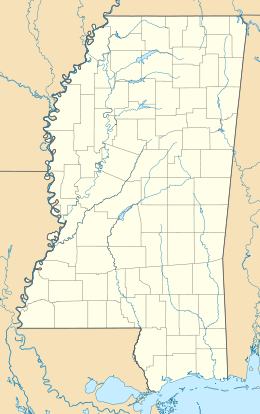
Jefferson F. Davis was an American politician who served as the first and only president of the Confederate States from 1861 to 1865. He represented Mississippi in the United States Senate and the House of Representatives as a member of the Democratic Party before the American Civil War. He was the United States Secretary of War from 1853 to 1857.

Wilkes County is a county located in the east central portion of the U.S. state of Georgia. As of the 2020 census, the population was 9,565. The county seat is the city of Washington.
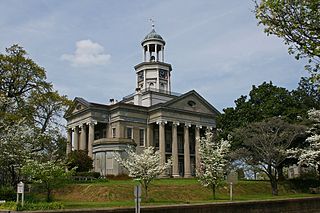
Vicksburg is a historic city in Warren County, Mississippi, United States. It is the county seat. The population was 21,573 at the 2020 census. Located on a high bluff on the east bank of the Mississippi River across from Louisiana, Vicksburg was built by French colonists in 1719. The outpost withstood an attack from the native Natchez people. It was incorporated as Vicksburg in 1825 after Methodist missionary Newitt Vick. The area that is now Vicksburg was long occupied by the Natchez Native Americans as part of their historical territory along the Mississippi. The first Europeans who settled the area were French colonists who built Fort Saint Pierre in 1719 on the high bluffs overlooking the Yazoo River at present-day Redwood. They conducted fur trading with the Natchez and others, and started plantations. During the American Civil War, it was a key Confederate river-port, and its July 1863 surrender to Ulysses S. Grant, along with the concurrent Battle of Gettysburg, marked the turning-point of the war.

The Beauvoir estate, built in Biloxi, Mississippi, along the Gulf of Mexico, was the post-war home (1876–1889) of the former President of the Confederate States of America Jefferson Davis. The National Park Service designated the house and plantation as a National Historic Landmark.

Varina Anne Banks Davis was the only First Lady of the Confederate States of America, and the longtime second wife of President Jefferson Davis. She moved to the Presidential Mansion in Richmond, Virginia, in mid-1861, and lived there for the remainder of the Civil War. Born and raised in the South and educated in Philadelphia, she had family on both sides of the conflict and unconventional views for a woman in her public role. She did not support the Confederacy's position on slavery, and was ambivalent about the war.

Sarah Knox Davis was the daughter of the 12th U.S. president Zachary Taylor and part of the notable Lee family. She met future Confederate president Jefferson Davis (1808–1889) when living with her father and family at Fort Crawford during the Black Hawk War in 1832. They married in 1835 and she died three months later of malaria.
Benjamin Thornton Montgomery was an American inventor, landowner, and freedman in Mississippi. He was taught to read and write English, and became manager of supply and shipping for Joseph Emory Davis at Hurricane Plantation at Davis Bend.

Mississippi was the second southern state to declare its secession from the United States, doing so on January 9, 1861. It joined with six other southern states to form the Confederacy on February 4, 1861. Mississippi's location along the lengthy Mississippi River made it strategically important to both the Union and the Confederacy; dozens of battles were fought in the state as armies repeatedly clashed near key towns and transportation nodes.
Davis Bend, Mississippi, was a peninsula named after planter Joseph Emory Davis, who owned most of the property. There he established the 5,000-acre Hurricane Plantation as a model slave community. Davis Bend was about 15 miles south of Vicksburg, Mississippi, and was surrounded by the Mississippi River on three sides. He gave his much younger brother Jefferson Davis the adjoining Brierfield Plantation.

Brierfield Plantation was a large forced-labor cotton farm built in 1847 in Davis Bend, Mississippi, south of Vicksburg, and the home of Confederate President Jefferson Davis.

Hurricane Plantation located near Vicksburg, Mississippi, was the home of Joseph Emory Davis (1784–1870), the oldest brother of Jefferson Davis. Located on a peninsula of the Mississippi River in Warren County, Mississippi, called Davis Bend after its owner, Hurricane Plantation at its peak in the antebellum era comprised more than 5,000 acres (20 km2) with approximately 5 miles (8.0 km) of river frontage. Joseph Davis owned 346 enslaved people and had a personal worth of more than $600,000 in the 1860 U.S. Census, making him one of the wealthiest men in the state of Mississippi.
Joseph Emory Davis was an American lawyer who became one of the wealthiest planters in Mississippi in the antebellum era; he owned thousands of acres of land and was among the nine men in Mississippi who owned more than 300 slaves. He was the elder brother of Jefferson Davis and acted as his surrogate father for several years. The younger Davis became a politician, U.S. Senator, and later President of the Confederacy.
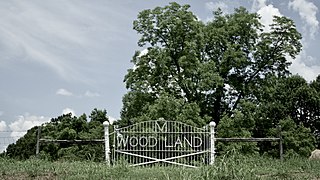
The Woodland Plantation is a historic Southern plantation near Church Hill, Jefferson County, Mississippi. It retains its original antebellum 230 acre size, and has the tradition of primarily supplying hay to the area cattle. It also has a pecan orchard.

The 1804 Antigua–Charleston hurricane was the most severe hurricane in the American state of Georgia since 1752, causing over 500 deaths and at least $1.6 million (1804 USD) in damage throughout the Southeastern United States. Originating near Antigua on 3 September, it initially drifted west-northwestward, soon nearing Puerto Rico. Throughout its existence in the Caribbean Sea, the hurricane damaged, destroyed, and capsized numerous ships, and at Saint Kitts, it was considered to be the worst since 1772. By 4 September, the storm arrived at the Bahamas and turned northward before approaching the coast of northern Florida on 6 September. The hurricane eventually came ashore along the coastline of Georgia and South Carolina while producing mostly southeasterly winds. A severe gale was noted in New England later that month, on 11 and 12 September, although it was likely not the same system as that which had passed through the Caribbean and southeastern United States earlier that month.

The Cypress Grove Plantation was a Southern plantation owned by President Zachary Taylor near Rodney, Mississippi. Later, it was also known as Buena Vista Plantation.
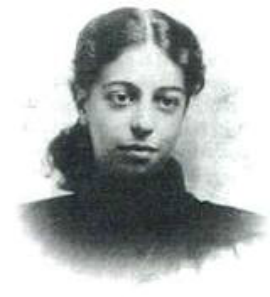
Mary Cordelia Montgomery Booze was an American political organizer and activist. The daughter of former slaves, she was one of the first African-American women to sit on the Republican National Committee. From 1924 until her death, she was the national committeewoman for her native state of Mississippi.
Mound Landing is a ghost town in Bolivar County, Mississippi, United States.

William Thornton Montgomery was an American freedman, businessman, farmer, and community leader, best known for his contributions to agriculture and his advocacy for African American empowerment. Born into slavery on Joseph Davis' Hurricane plantation in Warren County, Mississippi, in February 1843, Montgomery was the eldest son of Benjamin Thornton Montgomery and Mary Montgomery. He grew up alongside his younger brother, Isaiah Montgomery, who later founded Mound Bayou, Mississippi, an all-black community.
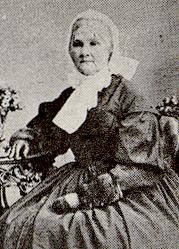
Margaret Louisa Kempe Howell was an American heiress, planter, and slaveowner who was the mother of Confederate First Lady Varina Davis and mother-in-law of Confederate President Jefferson Davis. Upon her marriage to the son of New Jersey Governor Richard Howell, her father granted her a dowry of sixty slaves and two thousand acres of land in Mississippi. She and her husband faced financial difficulties throughout their lives and depended on the support of her family. After their plantation was seized by creditors, they rented a mansion known as The Briars from John Perkins Sr. Following the American Civil War, Howell fled to Canada, where she died.

Eliza Jane Van Benthuysen Davis was an American planter, letter writer, and the châtelaine of Hurricane Plantation. She was married to Joseph Emory Davis, the older brother of Confederate President Jefferson Davis.
